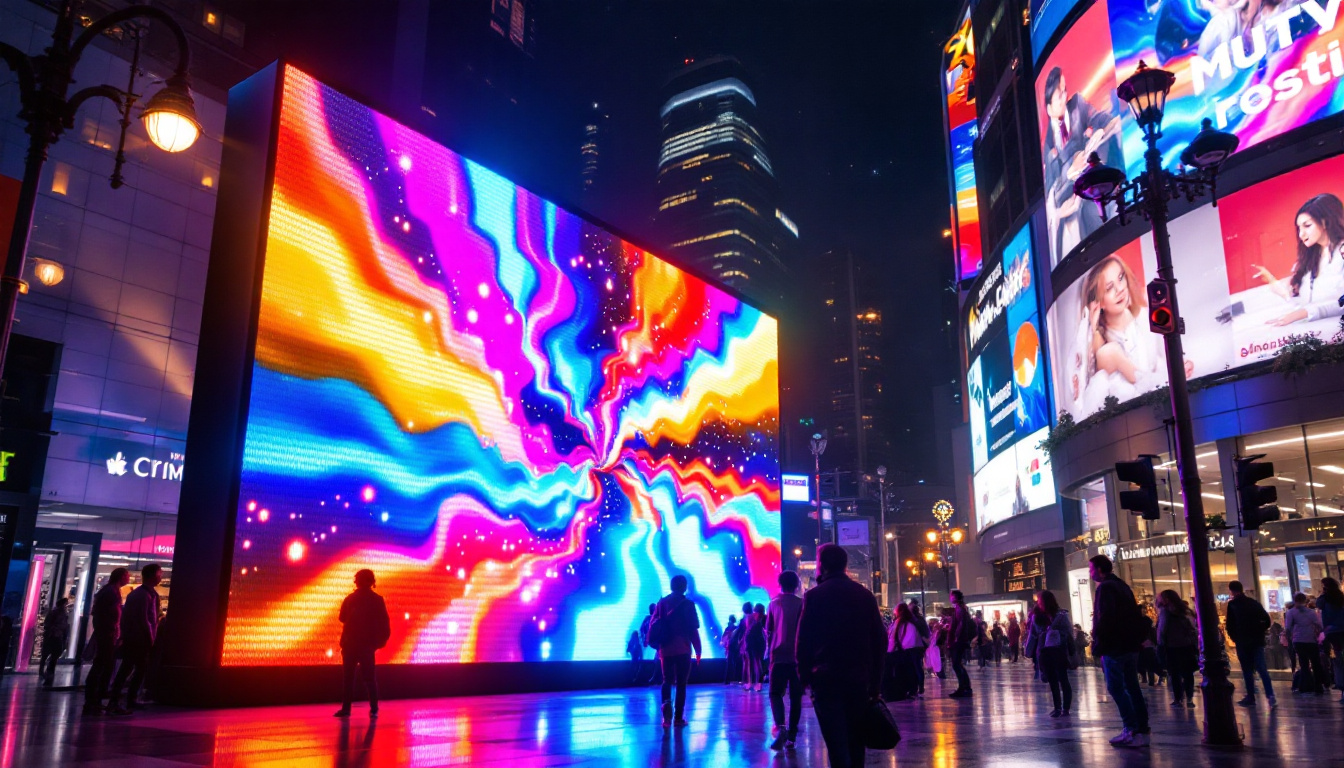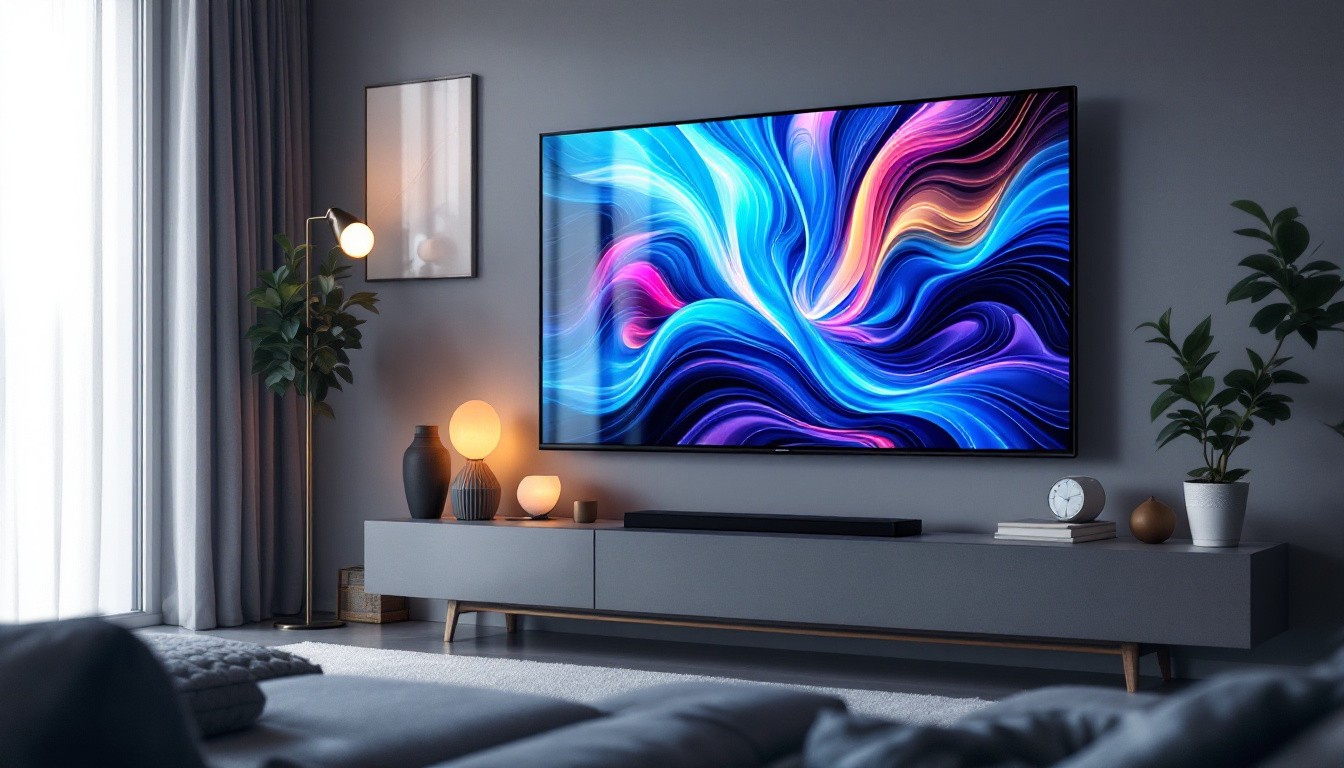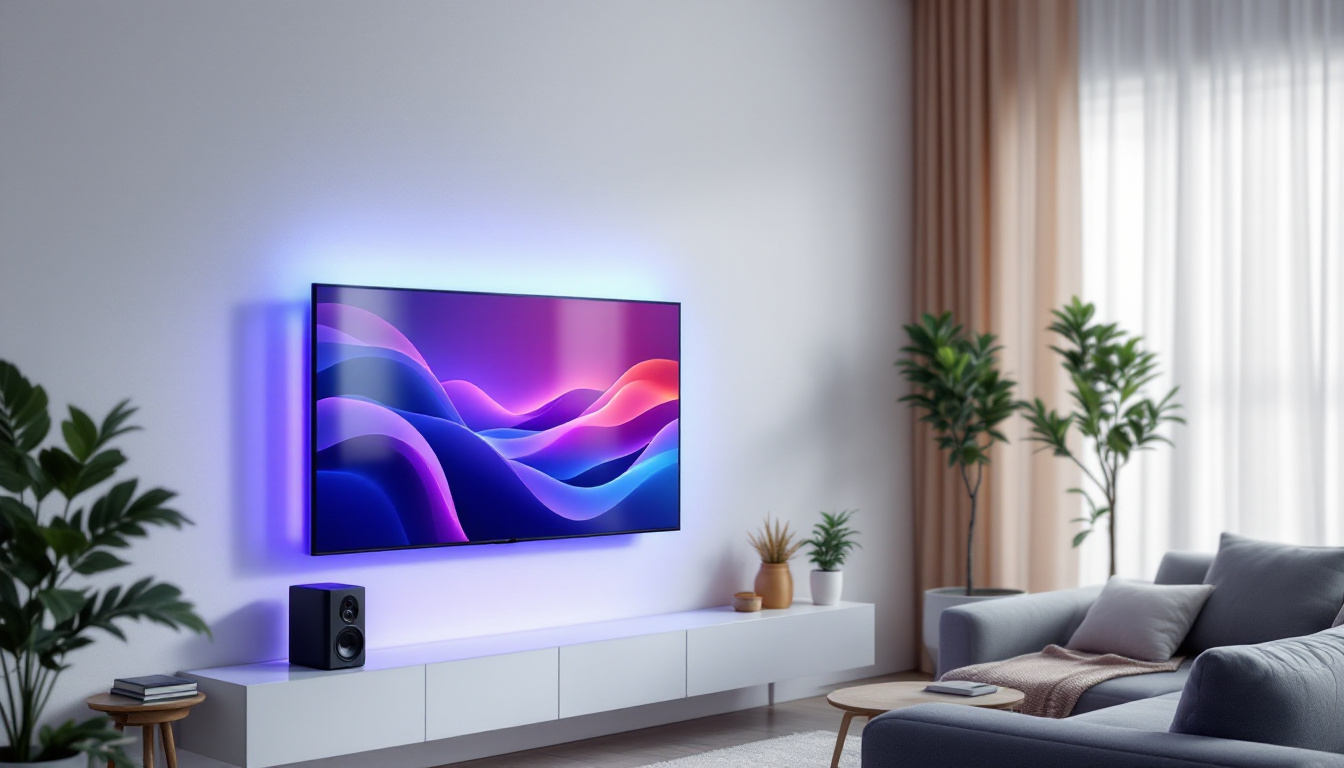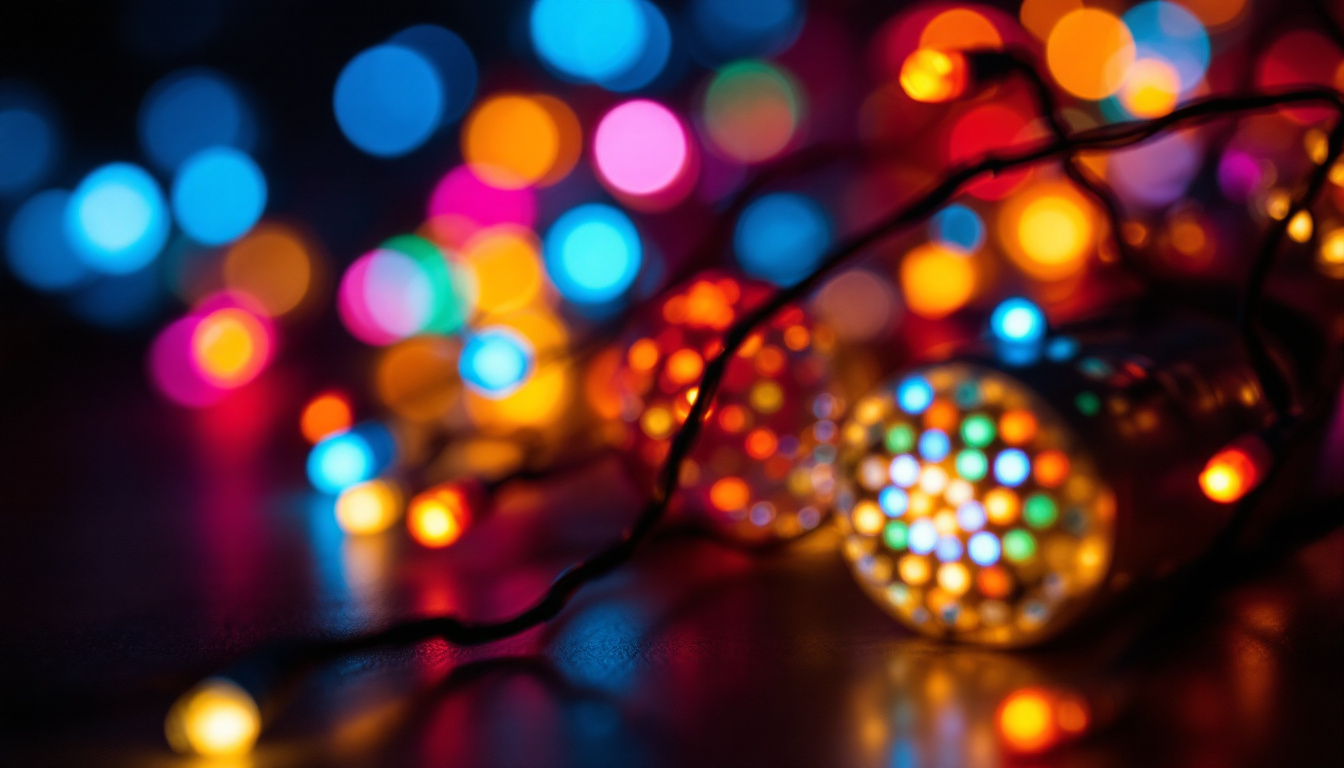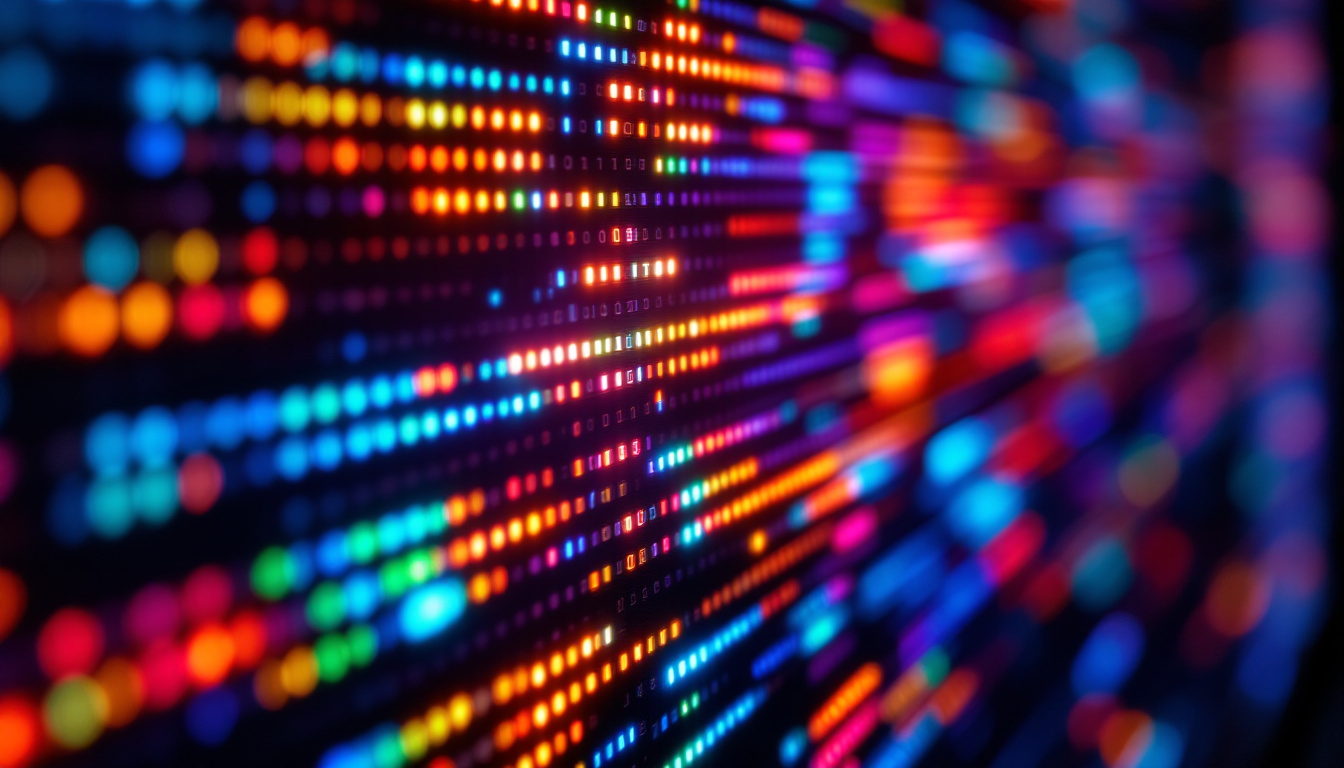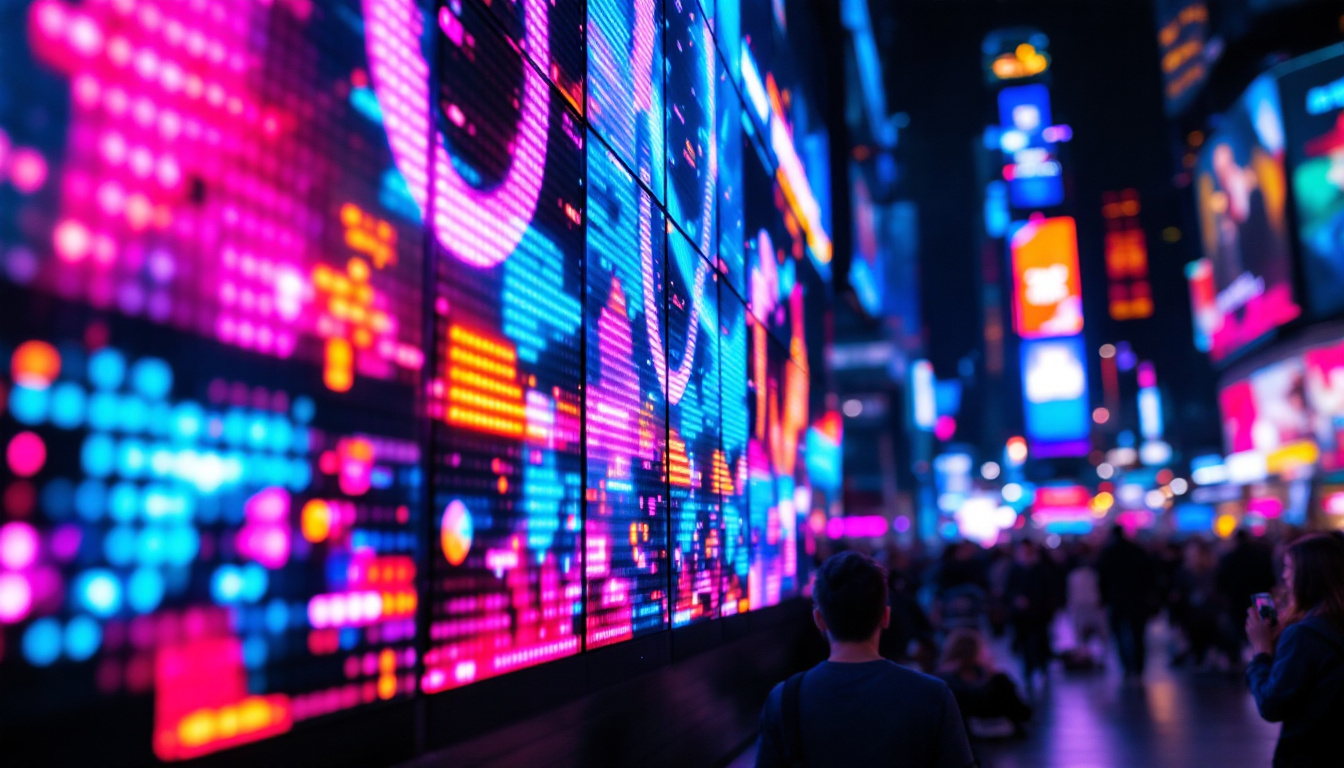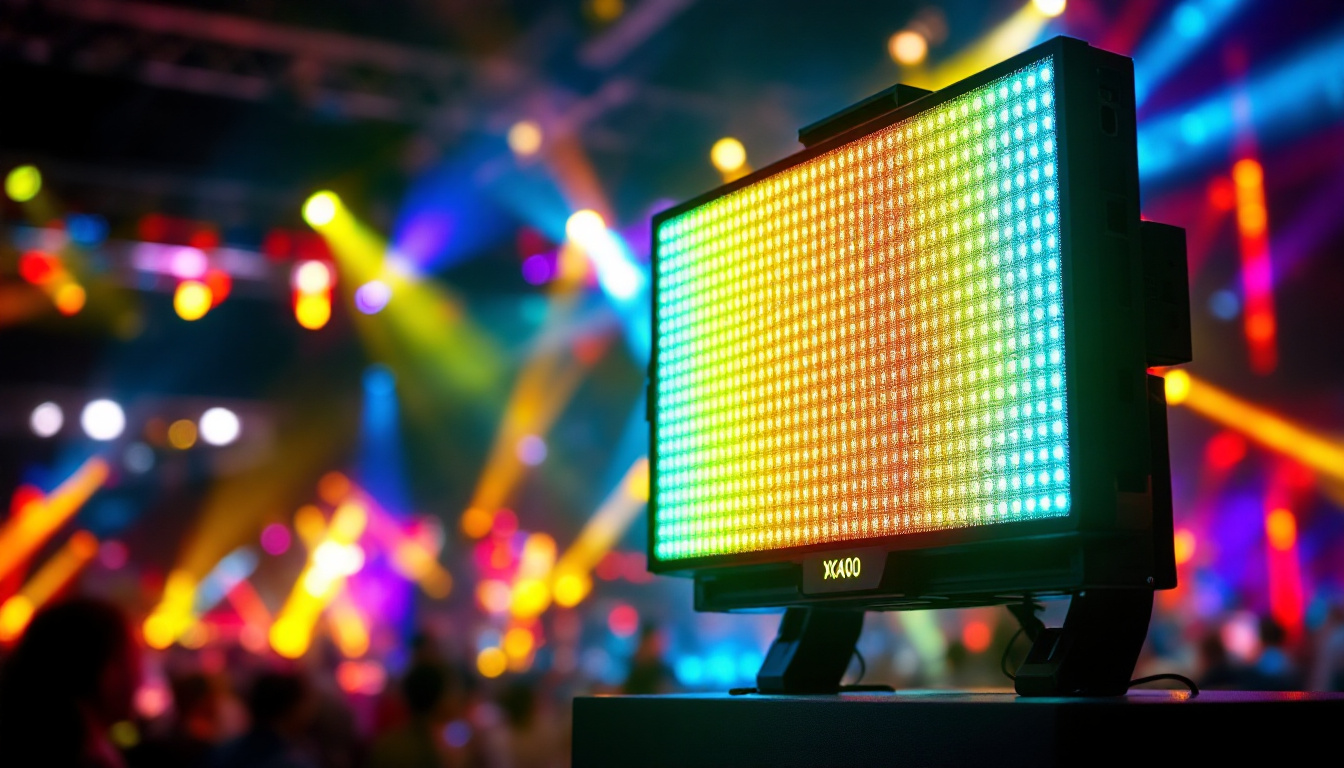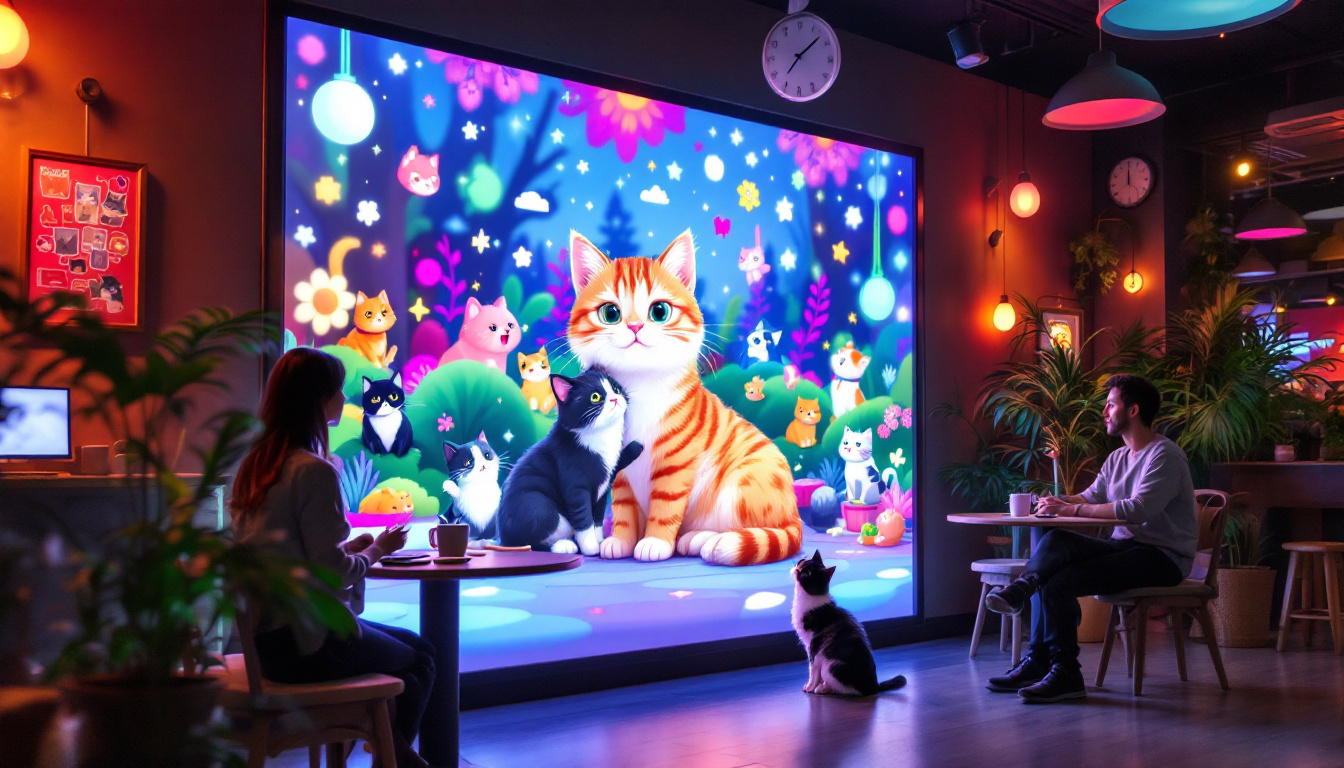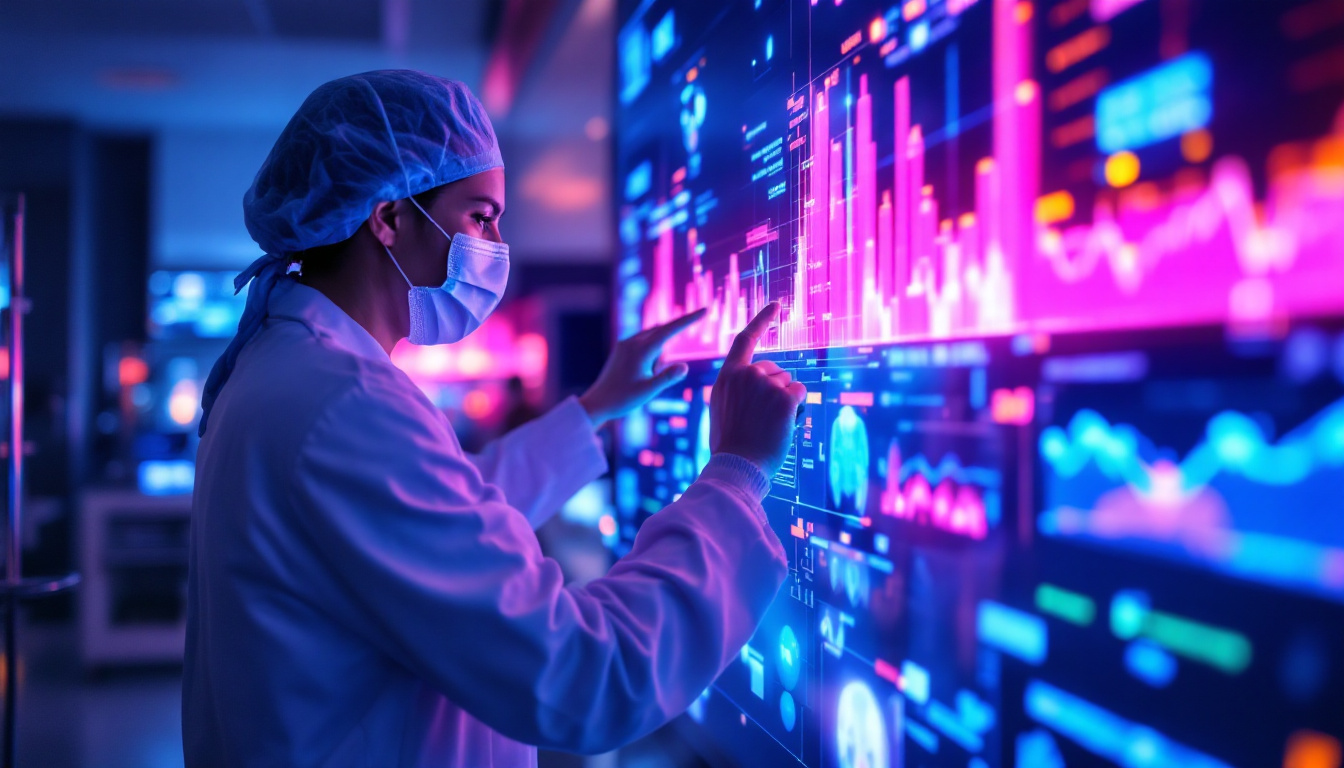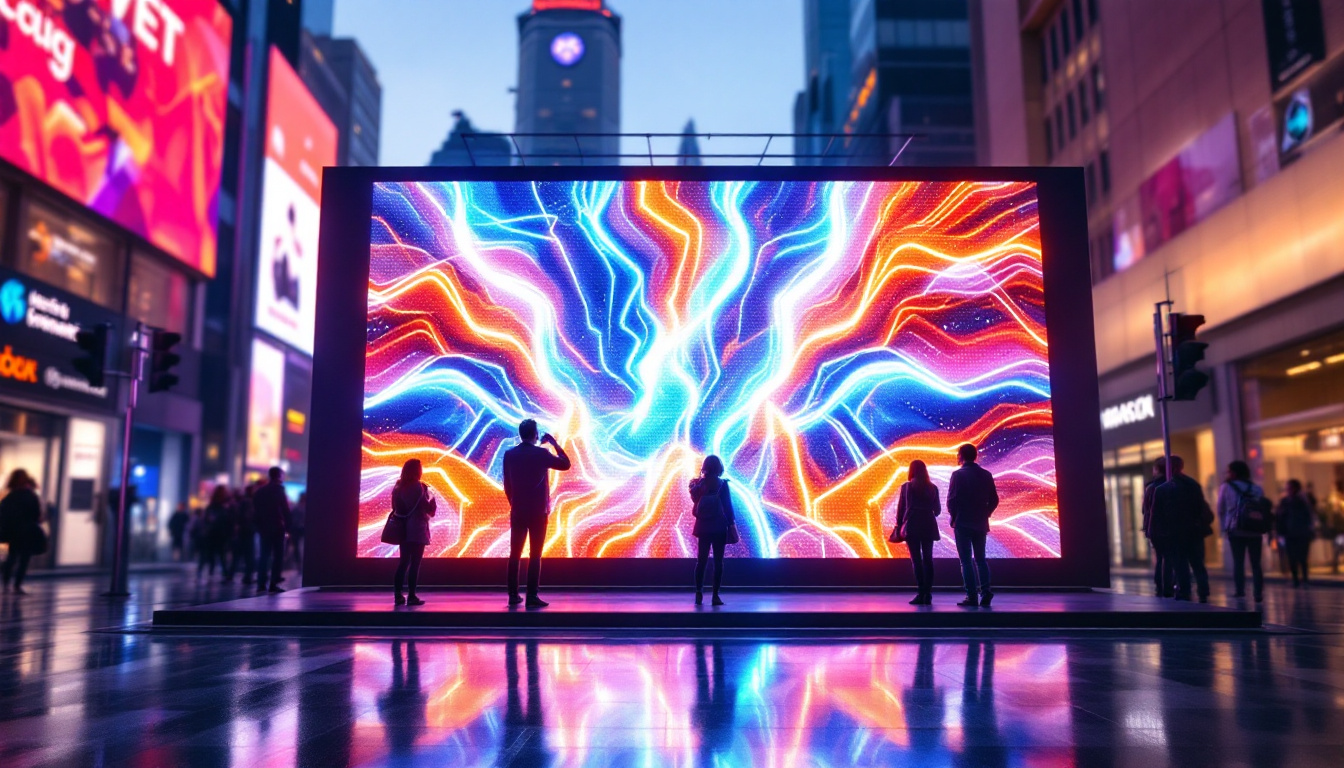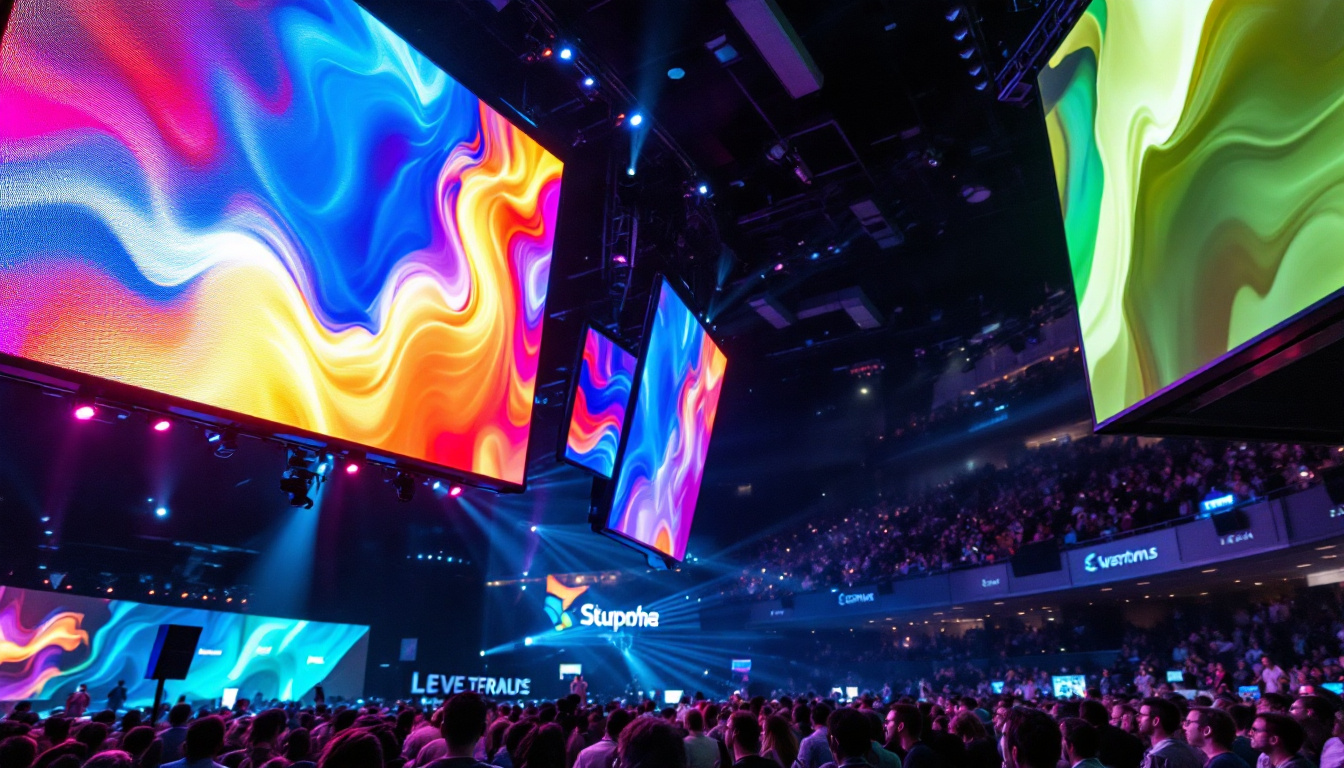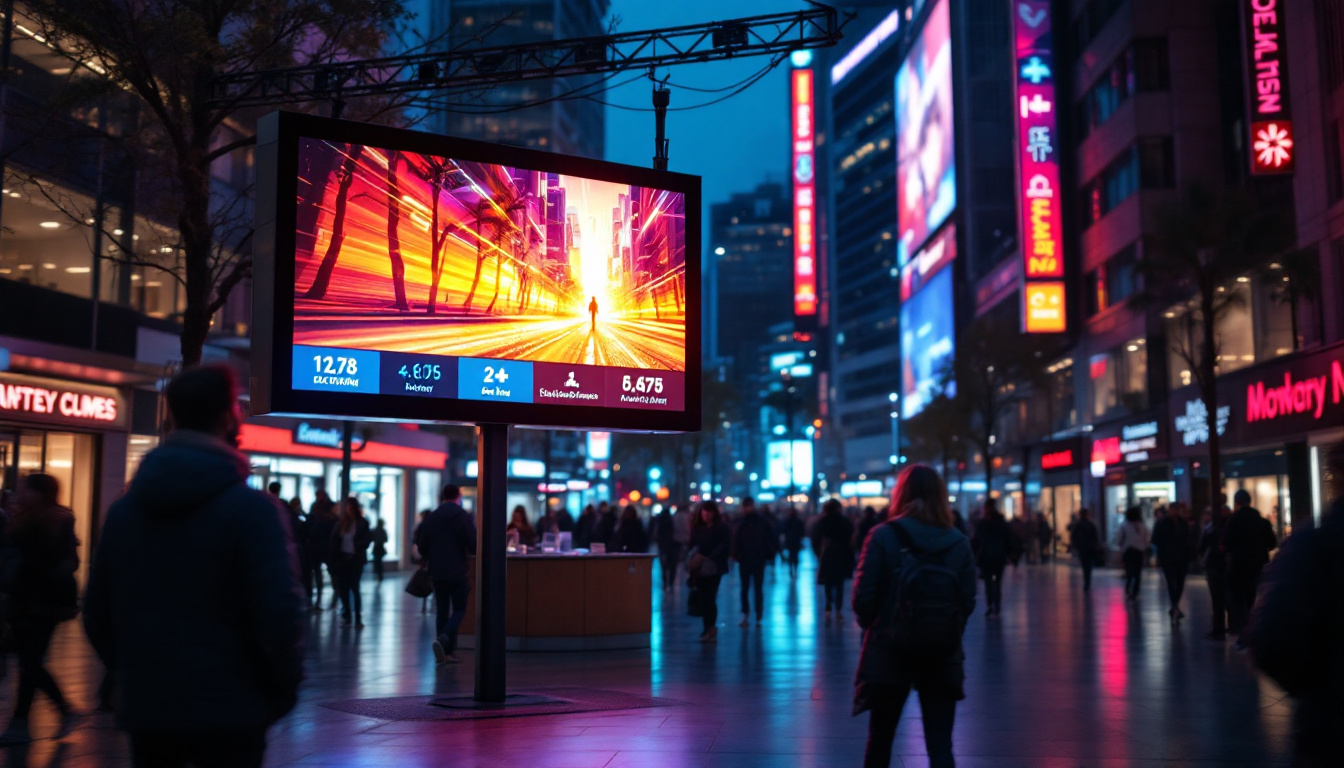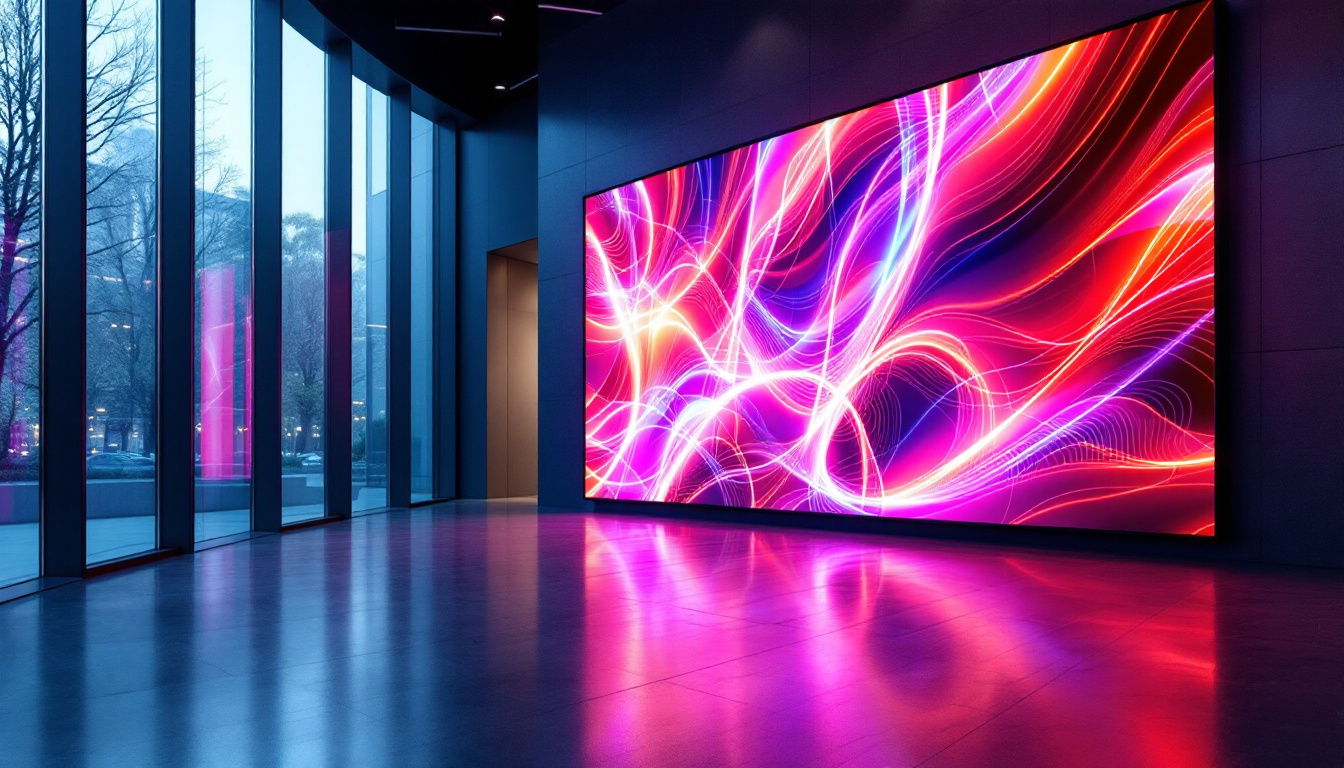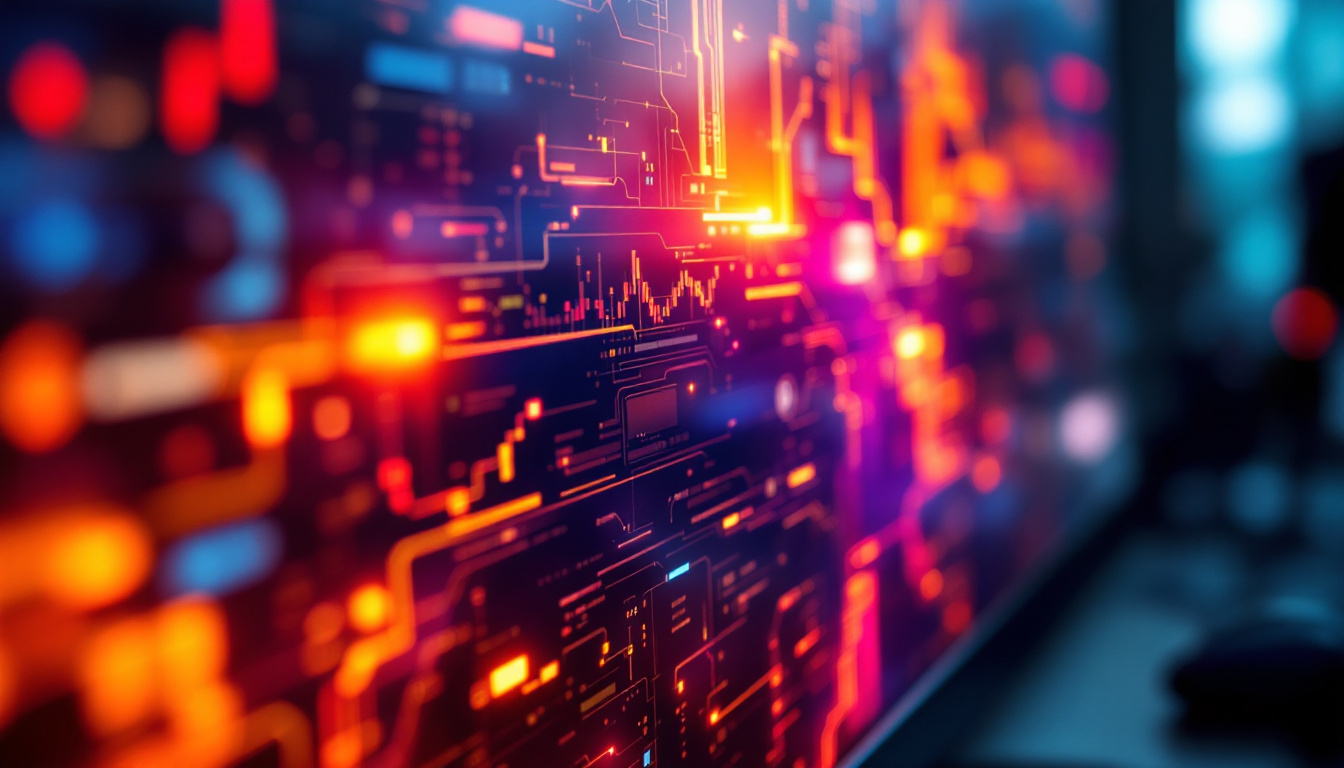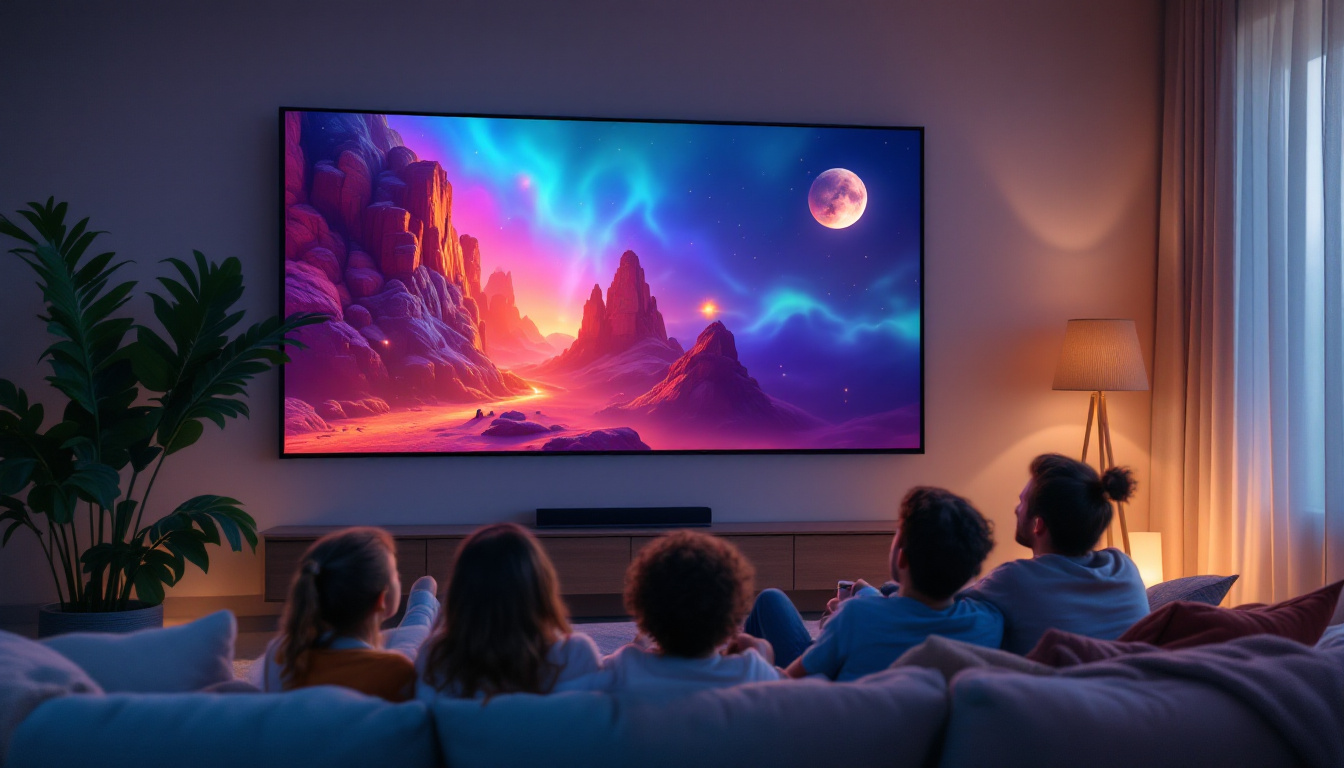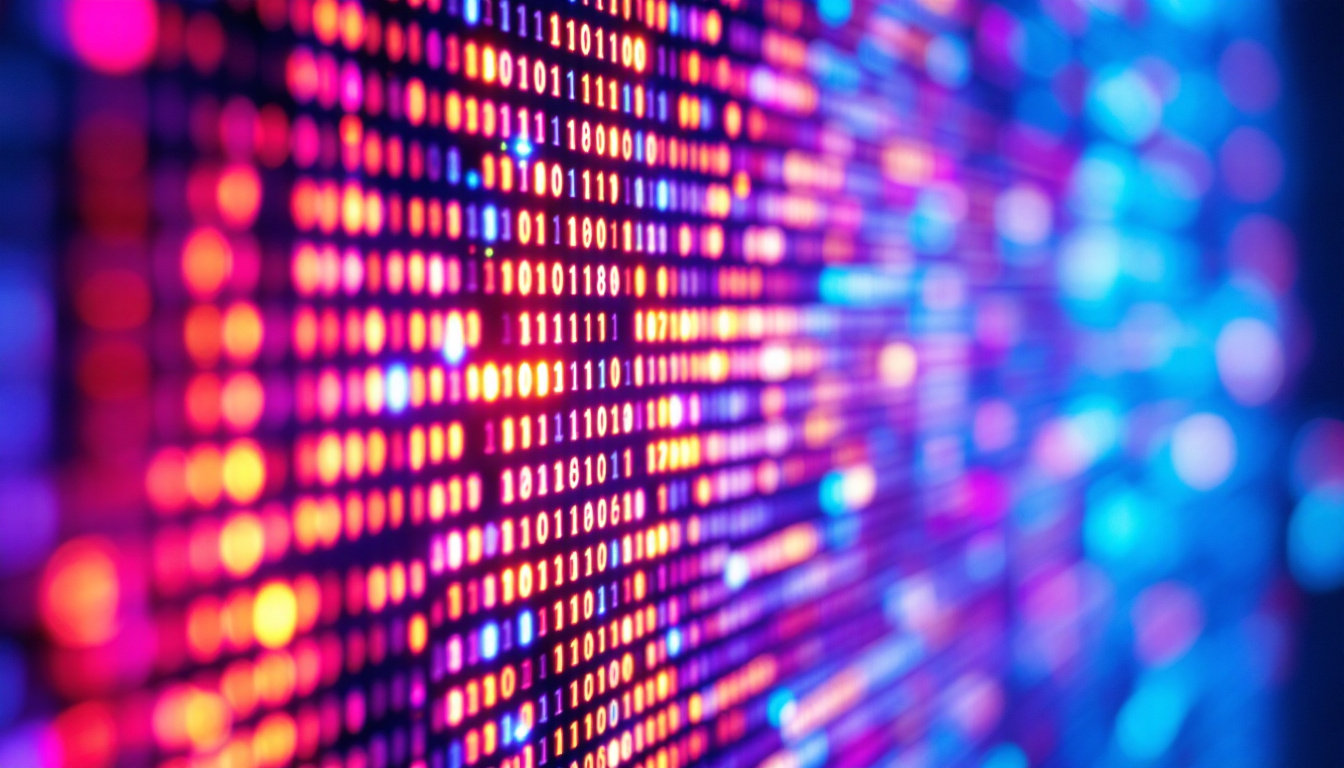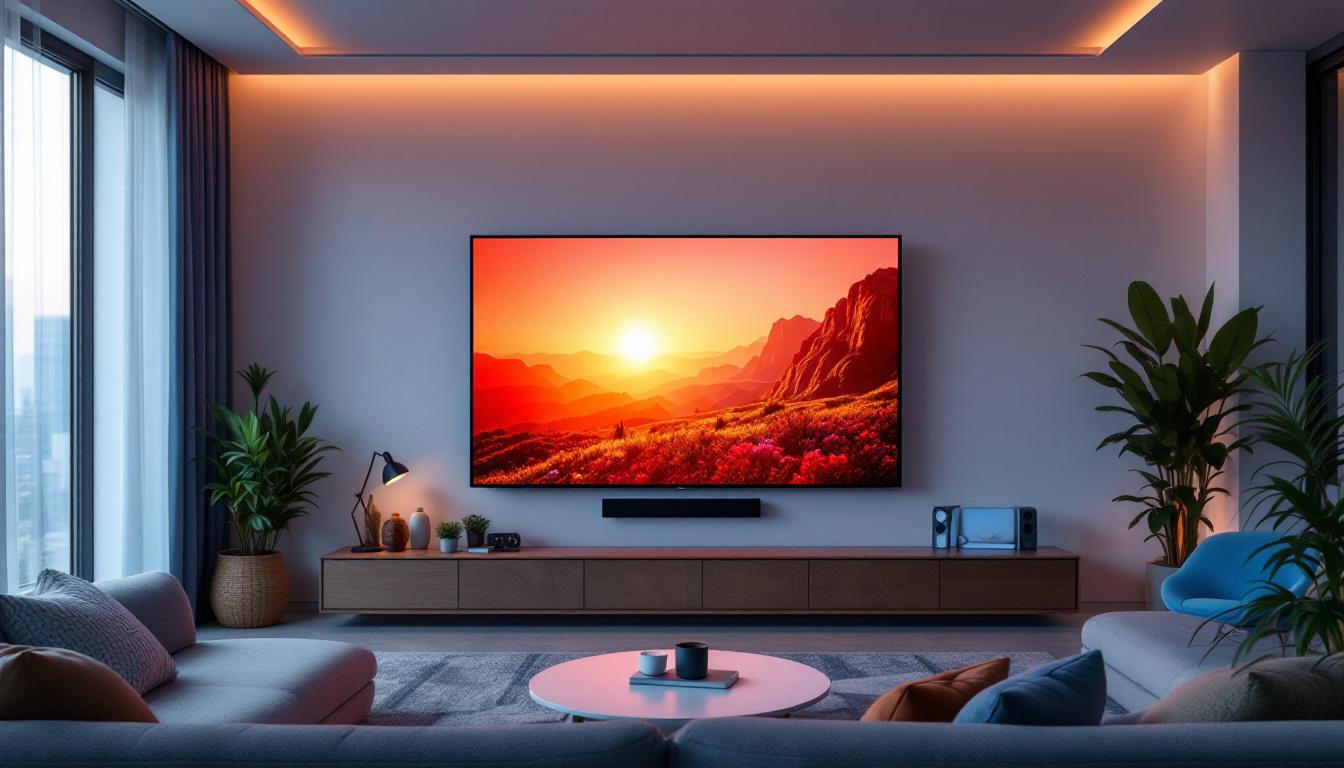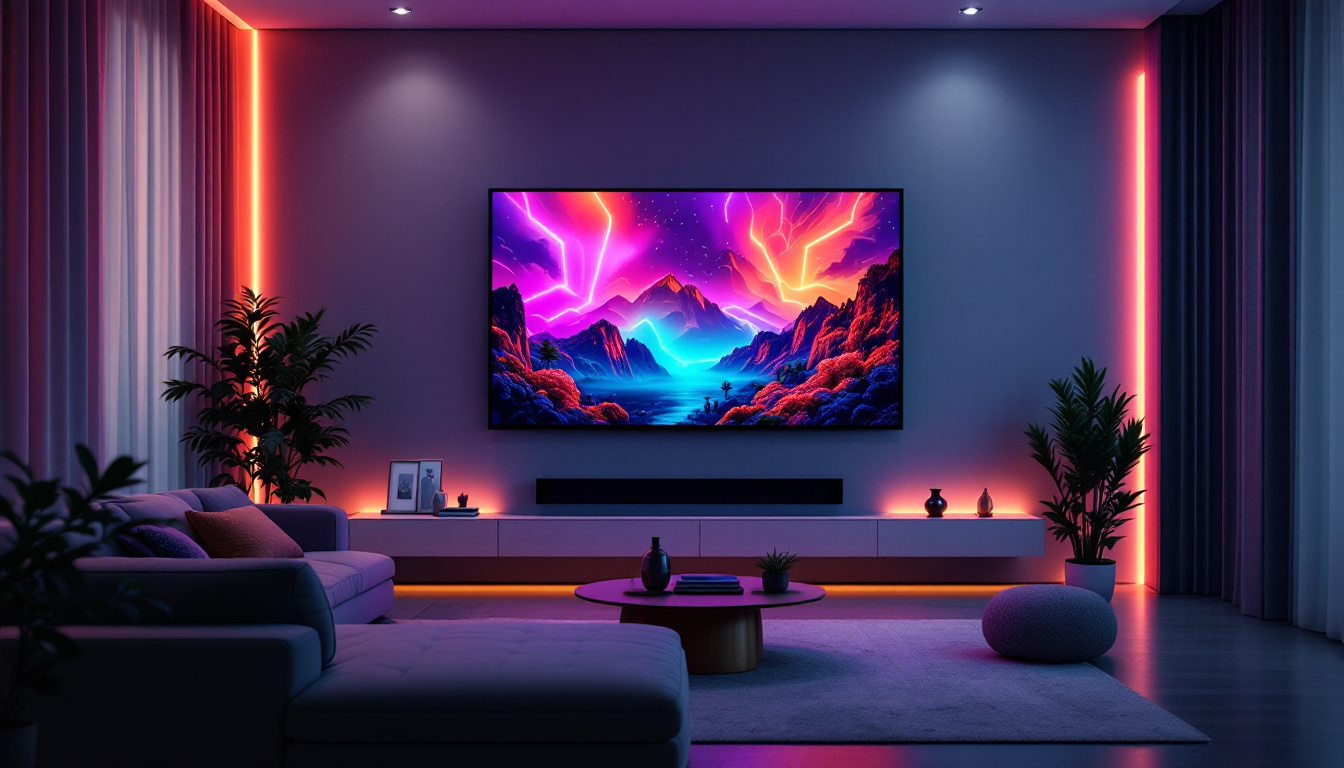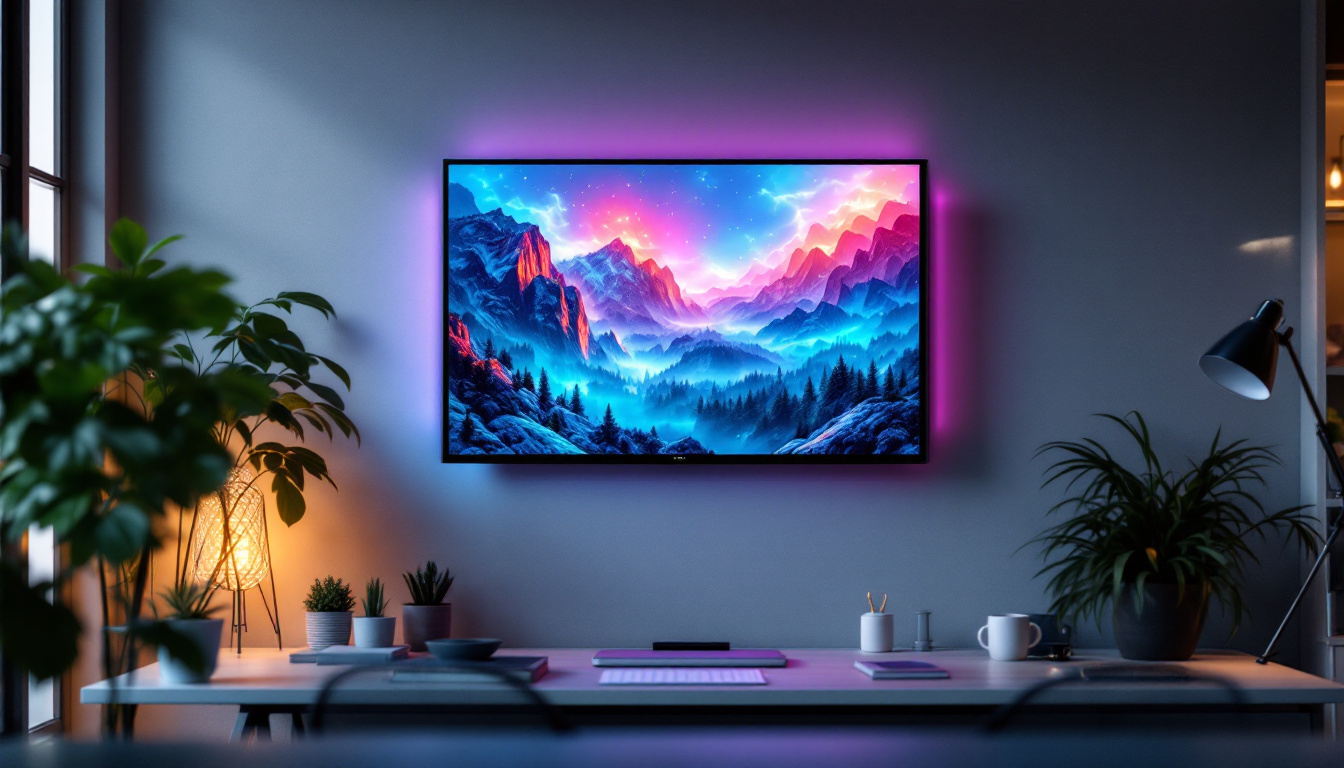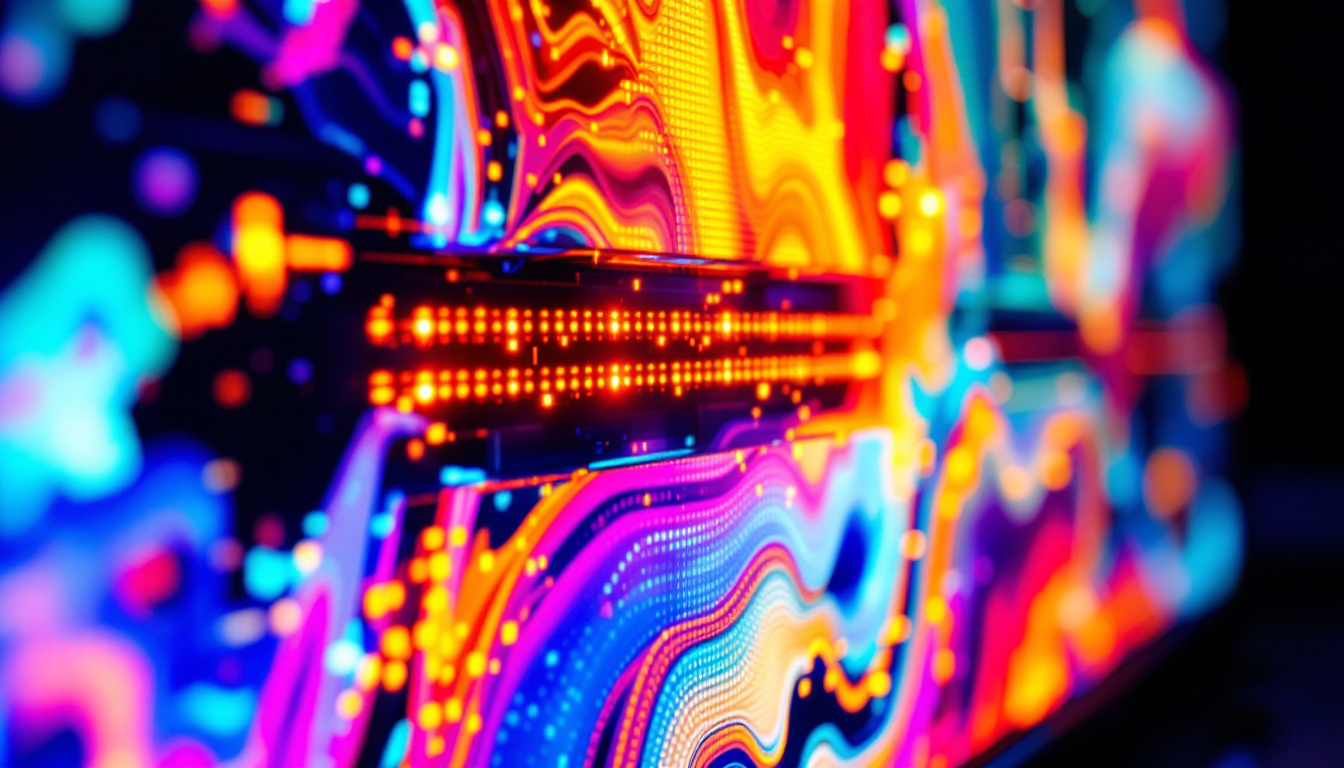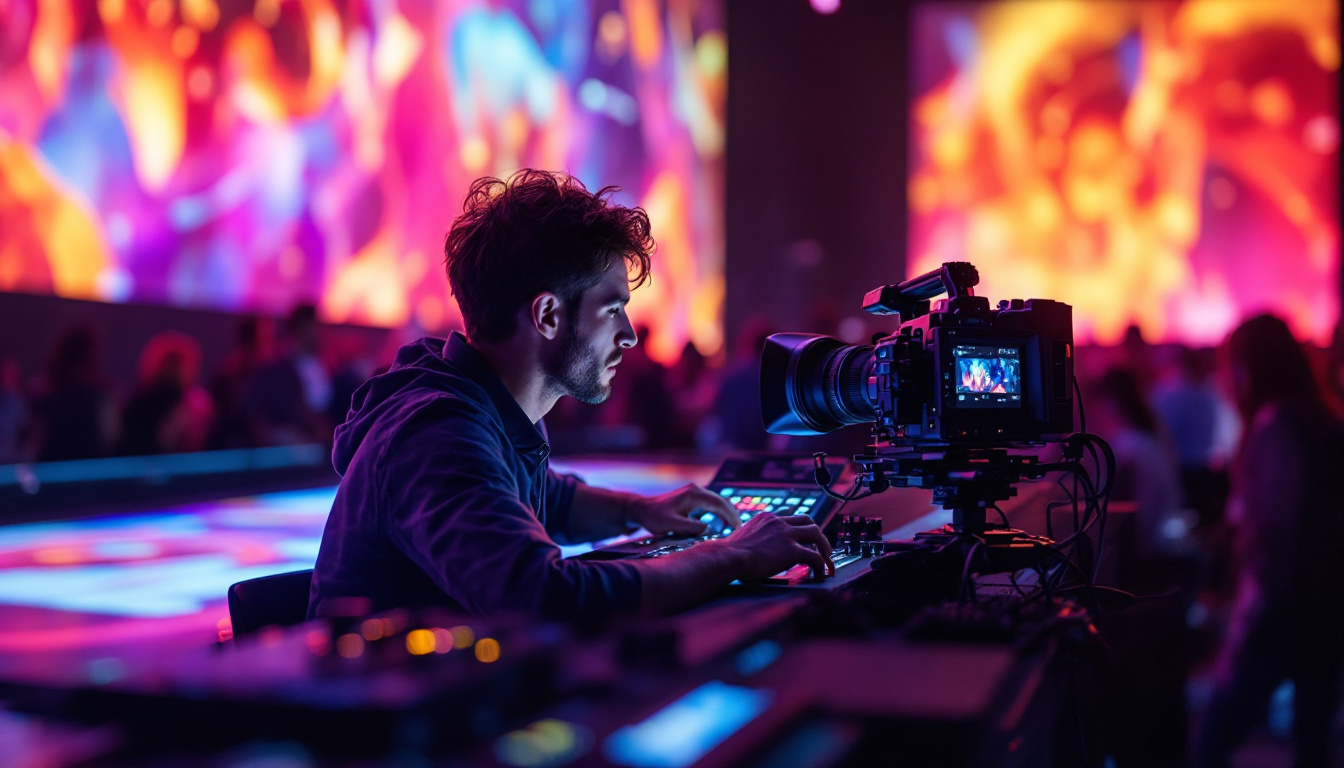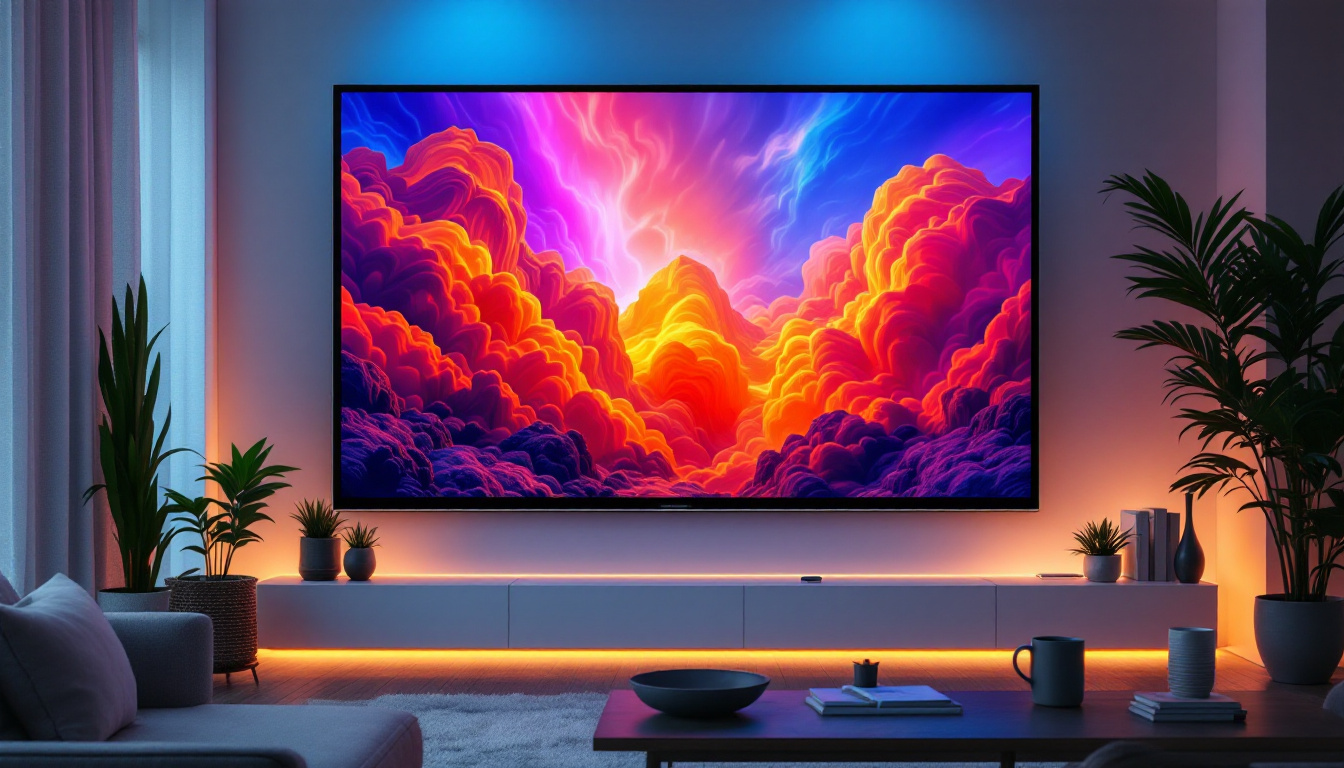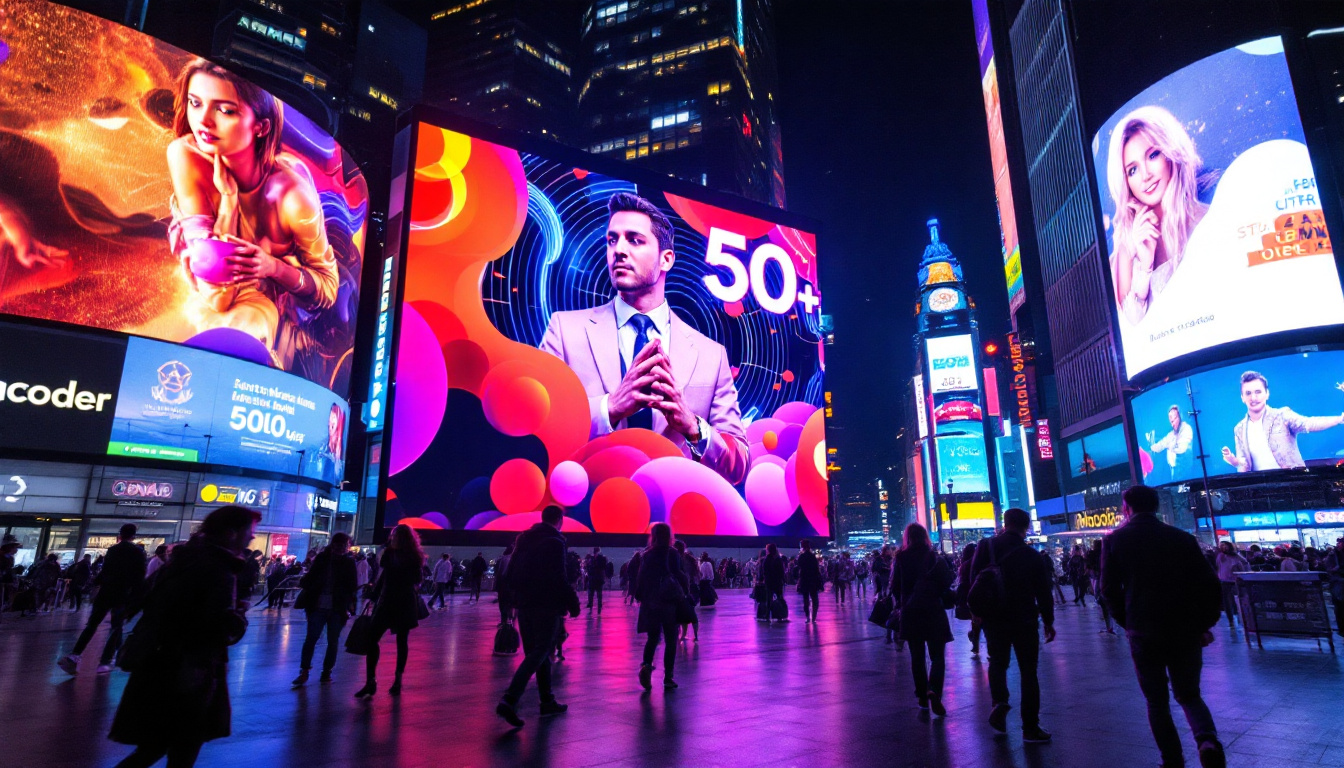In the ever-evolving landscape of technology, LED displays have emerged as a transformative force in various industries, from advertising to entertainment. Their efficiency, versatility, and vibrant visuals have made them a preferred choice for businesses and organizations looking to enhance their visibility and communication. This article delves into the intricacies of LED displays, exploring their functionality, benefits, and applications.
Understanding LED Technology
Light Emitting Diodes (LEDs) are semiconductor devices that emit light when an electric current passes through them. Unlike traditional incandescent bulbs, which produce light through heat, LEDs generate light through electroluminescence. This fundamental difference in operation leads to numerous advantages, making LEDs a revolutionary choice for display technology.
The Science Behind LEDs
At the core of LED technology is the semiconductor material, typically composed of gallium arsenide or gallium phosphide. When electricity flows through the diode, electrons recombine with holes in the semiconductor, releasing energy in the form of photons—this is the light we see. The color of the emitted light depends on the materials used in the semiconductor, allowing for a wide spectrum of colors to be produced. This property not only enables vibrant displays but also allows for the fine-tuning of color temperatures, which can be particularly beneficial in applications ranging from photography to interior lighting design.
LEDs can be configured in various ways to create displays of different sizes and resolutions. By combining red, green, and blue (RGB) LEDs, a full-color display can be achieved, enabling the reproduction of vibrant images and videos. This RGB configuration is fundamental to the operation of most LED displays. Furthermore, advancements in technology have led to the development of white LEDs, which utilize a blue LED combined with a yellow phosphor to produce a warm white light, making them ideal for general lighting applications.
Types of LED Displays
LED displays can be categorized into several types, each serving distinct purposes and environments. The most common types include:
- Direct View LED Displays: These displays consist of individual LEDs arranged in a grid, allowing for high brightness and visibility. They are often used for billboards and large outdoor displays, where sunlight can wash out traditional screens. The durability and weather resistance of direct view LEDs make them a preferred choice for outdoor advertising.
- LED Video Walls: Composed of multiple smaller LED panels, video walls are ideal for creating large, seamless displays in venues such as stadiums and concert halls. These walls can be configured to display dynamic content, making them perfect for events and presentations where visual impact is crucial.
- OLED Displays: Organic LEDs (OLEDs) use organic compounds to emit light. They are known for their exceptional contrast ratios and flexibility, making them suitable for high-end televisions and mobile devices. The ability of OLEDs to produce true blacks by turning off individual pixels enhances the viewing experience, particularly in dark environments.
In addition to these types, there are also specialized LED displays designed for niche applications. For instance, transparent LED displays are gaining popularity in retail environments, allowing products behind the screen to remain visible while still displaying vibrant advertisements. Similarly, flexible LED displays are being developed for use in innovative architectural designs, enabling curved surfaces to come alive with light and color. These advancements illustrate the versatility of LED technology and its potential to transform various industries.
Benefits of LED Displays
The advantages of LED displays extend beyond their captivating visuals. They offer a range of benefits that make them a smart investment for businesses and organizations.
Energy Efficiency
One of the most significant benefits of LED technology is its energy efficiency. LEDs consume significantly less power compared to traditional lighting solutions, leading to reduced energy bills and a smaller carbon footprint. This efficiency is particularly advantageous for large-scale installations, where the energy savings can be substantial over time.
Moreover, LEDs have a longer lifespan, often lasting up to 100,000 hours. This longevity means fewer replacements and lower maintenance costs, further enhancing their overall cost-effectiveness. Businesses can allocate resources more efficiently, knowing that their display technology will remain operational for years.
Enhanced Visibility and Brightness
LED displays are renowned for their brightness, making them highly visible even in direct sunlight. This characteristic is crucial for outdoor advertising and information displays, ensuring that content remains legible under various lighting conditions. The ability to adjust brightness levels dynamically also allows for optimal viewing experiences, whether in a dimly lit room or a sunlit environment.
Additionally, LED displays provide excellent color accuracy and contrast, enabling the reproduction of vivid images and videos. This capability enhances the overall impact of advertising campaigns and presentations, capturing the attention of audiences effectively.
Versatility and Customization
LED displays are incredibly versatile, suitable for a wide range of applications. From retail stores showcasing promotions to sports arenas displaying live scores, the adaptability of LED technology is unparalleled. They can be customized in size, shape, and resolution to meet specific needs, allowing businesses to create unique visual experiences.
Furthermore, LED displays can be integrated with various technologies, such as content management systems and interactive features. This integration enables real-time updates, dynamic content delivery, and audience engagement, making them a powerful tool for communication.
Applications of LED Displays
The applications of LED displays are vast and varied, spanning multiple industries. Their ability to convey information effectively and attract attention has led to widespread adoption across different sectors.
Advertising and Marketing
In the realm of advertising, LED displays have revolutionized how brands communicate with consumers. Digital billboards, storefront displays, and event signage utilize LED technology to deliver eye-catching messages that resonate with audiences. The dynamic nature of LED displays allows for frequent content updates, enabling businesses to promote sales, events, and new products in real-time.
Moreover, the ability to target specific demographics through location-based advertising enhances the effectiveness of marketing campaigns. Advertisers can tailor their messages to suit the preferences and behaviors of their target audience, maximizing engagement and conversion rates.
Entertainment and Events
LED displays play a crucial role in the entertainment industry, enhancing the visual experience at concerts, festivals, and sporting events. Large video walls and stage backdrops create immersive environments, captivating audiences and elevating performances.
In addition to live events, LED displays are also utilized in cinemas and theaters, providing high-quality visuals that enhance storytelling. The flexibility of LED technology allows for creative staging and dynamic presentations, pushing the boundaries of traditional entertainment.
Transportation and Public Information
LED displays are increasingly used in transportation systems to provide real-time information to passengers. Bus stops, train stations, and airports utilize LED screens to display arrival and departure times, delays, and other essential updates. This instant communication improves the overall travel experience and enhances operational efficiency.
public information displays in city centers and parks also benefit from LED technology. They can convey important messages, emergency alerts, and community announcements, ensuring that citizens stay informed and engaged.
Challenges and Considerations
Despite their numerous advantages, the implementation of LED displays is not without challenges. Businesses and organizations must consider several factors when integrating this technology into their operations.
Initial Investment Costs
While LED displays offer long-term savings through energy efficiency and durability, the initial investment can be substantial. Businesses must weigh the costs against the potential return on investment, considering factors such as expected usage, audience engagement, and advertising revenue.
However, as technology advances and production processes become more streamlined, the costs of LED displays have gradually decreased. This trend makes them more accessible to a broader range of businesses, from small retailers to large corporations.
Content Management and Maintenance
Effective content management is crucial for maximizing the impact of LED displays. Businesses must invest in content creation, scheduling, and management systems to ensure that their displays deliver relevant and engaging information. This requires ongoing effort and resources, which can be a challenge for some organizations.
Additionally, while LEDs are known for their longevity, they are not immune to wear and tear. Regular maintenance is essential to ensure optimal performance and address any issues that may arise. Establishing a maintenance schedule can help mitigate downtime and keep displays functioning smoothly.
The Future of LED Displays
The future of LED display technology looks promising, with continuous advancements on the horizon. Innovations in materials, design, and functionality are expected to further enhance the capabilities of LED displays, making them even more versatile and efficient.
MicroLED Technology
One of the most exciting developments in the LED industry is the emergence of MicroLED technology. MicroLEDs are tiny, individual LEDs that can be used to create displays with exceptional resolution and color accuracy. This technology allows for thinner, lighter, and more flexible displays, opening new possibilities for applications in various fields, including virtual reality and augmented reality.
As MicroLED technology matures, it has the potential to replace traditional LCD and OLED displays in consumer electronics, providing superior performance and energy efficiency.
Integration with Smart Technologies
The integration of LED displays with smart technologies is another trend shaping the future of this industry. As the Internet of Things (IoT) continues to expand, LED displays can be connected to various devices and systems, enabling real-time data sharing and interactive experiences.
This connectivity allows for personalized content delivery, audience engagement, and enhanced analytics, providing businesses with valuable insights into consumer behavior and preferences.
Conclusion
LED displays have transformed the way businesses and organizations communicate with their audiences. Their energy efficiency, versatility, and vibrant visuals make them an invaluable asset across various industries. While challenges exist, the benefits of LED technology far outweigh the drawbacks, making it a worthwhile investment for those looking to enhance their visibility and engagement.
As technology continues to evolve, the future of LED displays holds exciting possibilities. From MicroLED advancements to smart integrations, the potential for innovation is vast. Embracing these developments will enable businesses to stay ahead of the curve and leverage the full power of LED display technology.
Discover the Future of Visual Communication with LumenMatrix
Ready to elevate your brand’s presence and captivate your audience with the most advanced LED display technology? LumenMatrix is at the forefront of innovation, offering a diverse range of LED display solutions tailored to your unique needs. From Indoor and Outdoor LED Wall Displays to specialized options like Vehicle LED Displays, LED Sports Displays, and Custom LED solutions, we have everything you need to create an unforgettable visual experience. Embrace the future of digital signage with LumenMatrix and transform the way you communicate visually. Check out LumenMatrix LED Display Solutions today and see the difference for yourself.

